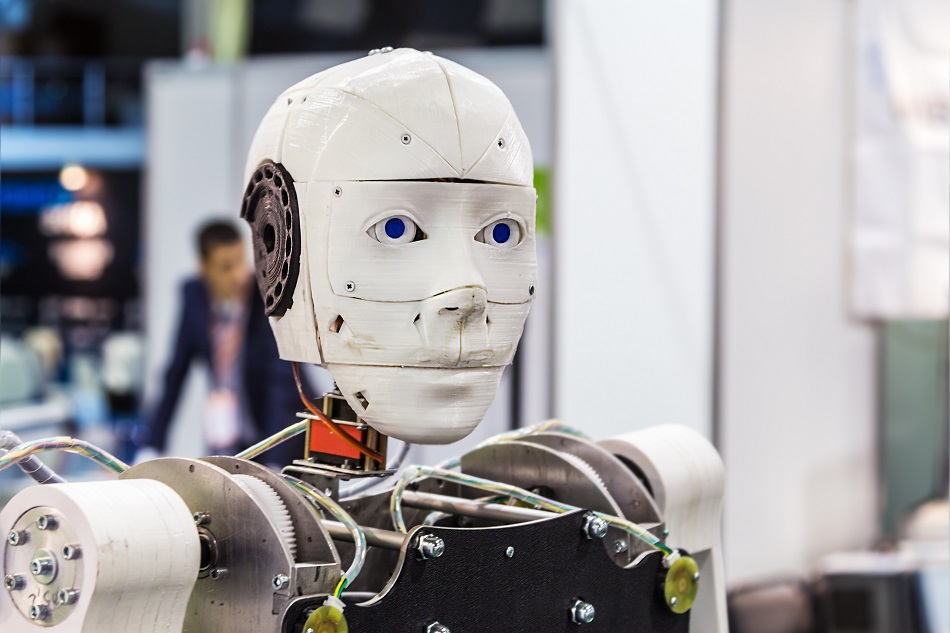
Image Credit: OlegDoroshin/Shutterstock.com
The principles of fluid mechanics have started to be applied to robotics as a means to optimize performance.
Fluid mechanics describes the behavior of fluids like water when moving or at rest. It can be applied to robotics in several areas, including in path planning and in the method of their movement.
Fluid Mechanics and Obstacle Avoidance
The first instance of applying the principles of fluid mechanics to robots arose in the 1980s. It was suggested that obstacle avoidance and smoother path planning could be achieved by a fluid mechanics method known as the velocity potential approach.
This means that the robot would behave more like a fluid by choosing the optimal path around an obstacle in a natural way.
The movement around obstacles in this way involves the construction of streamlines in the robot’s environment.
This allows for path planning in known environments with static obstacles as well as in unknown environments where robots need to react quickly and spontaneously to obstacles. For example, this can work through the computation of a set of streamlines once an obstacle is detected.
The computation of these streamlines is done by using a velocity potential function algorithm that is free from local minima. The streamlines are transformed into a road map. The streamline that allows for the smoothest transition from the previously planned trajectory is then selected.
Issues in the Velocity Potential Approach
Since its introduction, the velocity potential approach has been developed to function in real-time.
Most of the approaches that attempt to use fluid mechanics for real-time obstacle avoidance use a point source and point sink combination in order to construct the flow. This method can be disadvantageous when used in conjunction with both tracking velocity vectors and obstacle avoidance vectors.
Research aiming to avoid collisions between robots has focused on, among other things, using combinations of other approaches.
For example, the velocity potential approach could be combined with force potential. These could be combined with, or used separately to, lane hopping, wherein streamlines change during operation.
Soft Robotics
While pathfinding uses the principles of fluid mechanics to assist in developing better robots, fluid mechanics can be applied more directly in soft robots.
Soft robots are not made of hard rigid components in the same way that hard robots are. They instead follow a design that is similar to muscular hydrostats (such as elephant trunks, which do not contain bone, octopus arms, and even human tongues).
Soft robotics applies fluid dynamics in the structure and design of the robots directly, rather than as theoretical frameworks for problem-solving.
For example, some approaches use viscous flows inside of soft actuators (joints in hard robots) which means that understanding the way in which fluid moves is important for robotic movement. This allows the robots to have a greater degree of flexibility, to work in more complex unstructured environments, and to perform delicate tasks.
In a hard robot, movement is controlled by actuators in the rigid joints, but these do not exist in soft robots where the soft fluid structure is continuous.
The use of ‘true’ soft structures, like octopus arms, are currently encountering significant issues with modeling for optimization and control, the active materials used, and fabrication. Many current models use undulatory motion, like worms or eels, for movement, which may not be practical in all scenarios.
There is also an interaction between path planning and soft robotics. Path planning is often harder in soft robots because it is not well understood how simple paths can be chosen when there are so many path options, given the fluid nature of the robotic shape.
Put simply, when the robotic structure is not restricted by rigid joints and can move in all dimensions, the possible space grows exponentially, and stream selection can be made from a greater number of possible streams. This adds to the impracticality of soft robots in their current state.
Sources and Further Reading
- Palm, R. and Driankov, D. (2014). Fluid mechanics for path planning and obstacle avoidance of mobile robots. 11th International Conference on Informatics in Control, Automation and Robotics. https://doi.org/10.5220/0004986902310238
- Gingras, D. et al. (2010). Path planning based on fluid mechanics for mobile robots using unstructured terrain models. IEEE International Conference on Robotics and Automation. https://doi.org/10.1109/ROBOT.2010.5509679
- Trivedi, D. et al. (2008). Soft robotics: biological inspiration, state of the art, and future research. Applied Bionics and Biomechanics. https://doi.org/10.1080/11762320802557865
Disclaimer: The views expressed here are those of the author expressed in their private capacity and do not necessarily represent the views of AZoM.com Limited T/A AZoNetwork the owner and operator of this website. This disclaimer forms part of the Terms and conditions of use of this website.